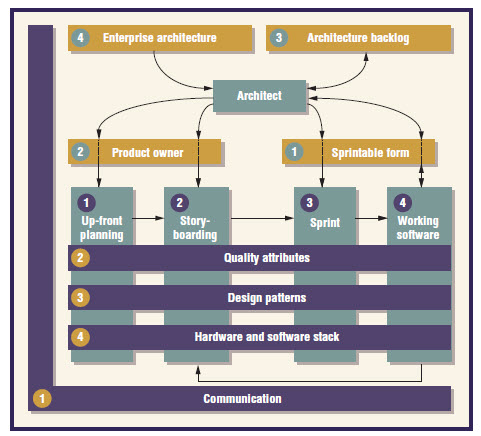gile Project Management Architecture or Agile Creativity. Establishing an agile project management architecture will allow a project team the ability to complete development in short-cycle iterations. Successful agile management needs an architect who understands how an agile project management works.
So let’s break down the planning that is involved in an agile project.
Plan out the architectural functions, which may include:
Establish what the hardware and software requirements are.
Determine if there are any technical issues that will prevent the architectural functions from continuing to the next storyboarding phase.
Make sure your technical people have dotted their "I's" and crossed their "T's" from a technical planning perspective.
Storyboarding the project and adding User interjection. So we want to know as a user what functionality should occur. This is also known as a user story. User Stories focus on functionality and not technology implementation. This helps the developers understand the breakdown of what i user will do and the motions that will get them through the story requirements. An example of a user story is the user needs to login and see pricing that is based on his login level. The level is established by the gross sales that his company does in a year.
Make sure that you don't get user stories and use cases confused. Use cases go into greater minute detail. Use cases require screenshots and many business rules.
Sprints get down to the nitty gritty. They assign the technical and the non-technical requirement of a project and are likely broken down from what comes first all the way to the end. Sprints can be numbered and completed before establishing and moving onto the next sprint. Sprints can be assigned a number that corresponds to the degree of difficulty in accomplishing the task. That number that is assigned to a sprint has lasting value. So if it's established that establishing a value of 3 takes two days to accomplish then that runs throughout the project management. So a 1 could correspond to 5 hours of work, a 5 equals 4 days, an 8 equals one week. So on and so forth.
Before a sprint is closed and a new sprint begins all work in the previous sprint needs to be signed off on by the project manager. When all the sprints have been completed and signed off on by the project manager your end product should now be ready for consumption.
Below is a flow graphic that gives you a quick view of how agile project management architecture can work.

Below is a table explaining the elements that make agile project framework flow.
Below is a table that takes you through the flow of an agile project from the team's view.
That in a simple form is what agile project management is about.
You can contact Hieroweb Interactive at 805-582-2081 and one of our agile project management project managers will discuss your case with you. We look forward to serving you on your next agile project management needs!
To discuss your Agile Project Management - Agile Creativity needs use our contact form or call us at 805-582-2081. Top